The North Table Mountain Ecological Reserve is a unique place where it is easy to find a wide variety of beautiful flowers. There isn’t a trail, you just wander over acres of countryside that can be covered with color. It’s out in the country and takes awhile to reach, but once you get there you’ll see vistas of flowers right as you step out of your car. If you time it right you can find several interesting waterfalls as well.
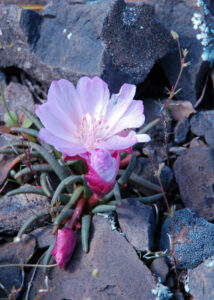
This is an elevated basalt mesa, relatively flat and broad, with canyons cutting in on the edges. The ancient lava flows have created a harsh environment that many different wildflowers take advantage of. Vernal pools form because the rain can’t easily penetrate the hard surface.
Cattle graze on the Reserve, which helps the native plants by keeping out invasive grasses. You do have to be careful to avoid approaching the cattle (we didn’t really see that many this time), as well as watching out for random strands of barbed wire. Bring old (but sturdy!) shoes and be really careful where you step, as there can be extensive wet and muddy areas, and then there are all those cattle…
Click on any photograph to see a larger image.
The Hike
This is a popular area when the flowers are blooming, so you won’t be by yourself on the weekends. It is such a wide open area, though, that this isn’t a problem at all.
There aren’t any formal trails here. Pick an interesting direction and wander off, watching for flowers and streams. Take note of the large oak tree by the parking lot, so that you can find your way back.
The Chico Hiking Association has an excellent map of the area (see the Phantom Falls Loop map) with GPS coordinates. On this map, at the middle right edge, you’ll see Cherokee Road and the “DFG Public Parking”. This is where you start. Everything is to the west of the parking lot. We found Ravine Falls and Phantom Falls to the northwest of our starting point, but we mostly wandered from place to place. You’ll find different kinds of flowers on the flatter east side than you will in the ravines to the west.
Timing is Everything
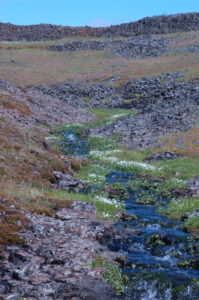 Generally I would expect the best bloom to be in early April, although that depends on rainfall. There is a range of flowers that show over the blooming season, but the farther away you get from rain the less you’ll see, as things can dry out quickly. You can find something interesting there from February through May.
Generally I would expect the best bloom to be in early April, although that depends on rainfall. There is a range of flowers that show over the blooming season, but the farther away you get from rain the less you’ll see, as things can dry out quickly. You can find something interesting there from February through May.
For this particular trip we went in mid April 2012, and the weather was wonderful. It can be windy here, as most of the area is fairly exposed (the wind seems to be stronger in the afternoon). In other years, though, we’ve been there in mid April and found it to be too cold and windy to enjoy.
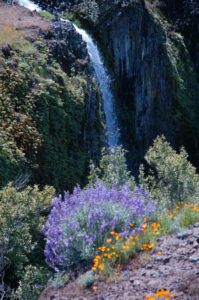 The strength of the waterfalls depends on the timing of rain – water takes a couple of weeks to percolate through the basalt layer so even if the weather is dry when you go, the falls could be running. In this visit there had been a wet storm just a few days before we arrived, so the waterfalls were very active.
The strength of the waterfalls depends on the timing of rain – water takes a couple of weeks to percolate through the basalt layer so even if the weather is dry when you go, the falls could be running. In this visit there had been a wet storm just a few days before we arrived, so the waterfalls were very active.
This year we had a drier than normal winter, so some flowers weren’t as prevalent as you might find in other years. When we visited two years ago there was a wonderful display of Sky Lupine (I’ve included s shot of this below), but this year they were hard to find.
Tours and Permits
In the past, the California Department of Fish and Wildlife offered tours on weekends, usually April and May (it varies each year). Unfortunately, due to overcrowding, CDFW is no longer offering tours. Will this change in the future? I can’t say. Go to the North Table Mountain Ecological Reserve to see if they have started again.
Note that you are required to have a CDFW Lands Pass (or a hunting / fishing license) for everyone 16 years old and up.
Directions
- Take I-5 North to Highway 99
- Continue on Highway 70 towards Marysville
- 70 zig-zags through Marysville, follow the signs directing you towards Oroville
- In Oroville, take Exit 48 at Grand Avenue and go east
- Continue on Grand for one mile, turn left on Table Mountain Blvd.
- After just on-tenth of a mile turn right on Cherokee Road. Portions of this are narrow and windy. There are several branches off of the main road that aren’t clearly marked – stay on the main road. You may see signs for a “covered bridge”, that is the direction to take.
- 6.3 miles from the start of Cherokee Road you will see a clearly marked parking area on your left. On busy days this can be full, there are many places on the wide roadside to park
In the past, during the blooming season there have been portable toilets at the parking lot. Starting in 2022 they have build a permanent restroom.
North Table Mountain Wildflowers
Please feel free to help me by correcting any errors I may make. Click on any photograph to see a larger image. I’ll start with a few favorites, and then the “gallery”.
Yellow Carpet is often found in vernal pools (we’ve also seen them at Jepson Prairie. This, and Goldfields, are the golden color you see in landscape photos.
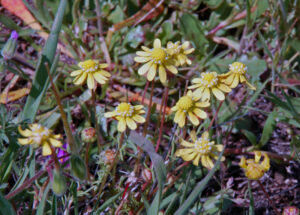
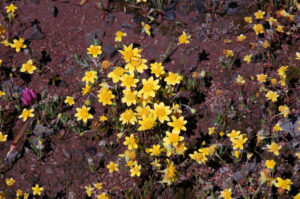
Usually you see large expanses of Sky Lupine mixed in with the Yellow Carpet and Gold Fields, but this year with the odd rain pattern we didn’t see a lot. This picture is from an earlier trip, in 2010.
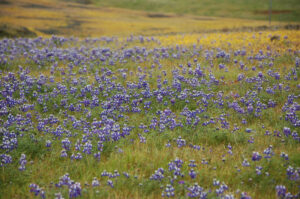
If the streams are running, in the deeper pools you can find California Newts.
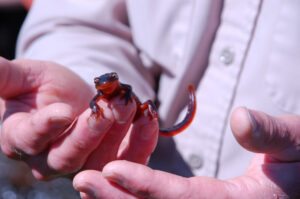
Sierra Mock Stonecrop was plentiful in the rugged broken lava fields near the road.
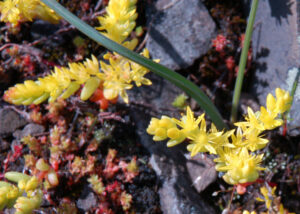
There were two kinds of poppy – Frying Pans are low and don’t have leaves on the stems, Foothill (or Tufted) Poppy tend to be taller.
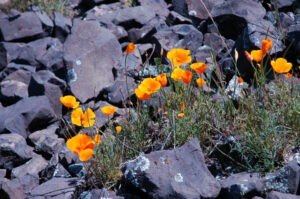
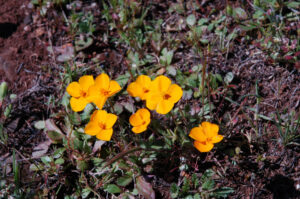
If you click on the lightbox image below you will see larger versions of the photos, and you can scroll through all of the plants (and other things) that we found on this hike. All photos are available for purchase in a variety of formats.
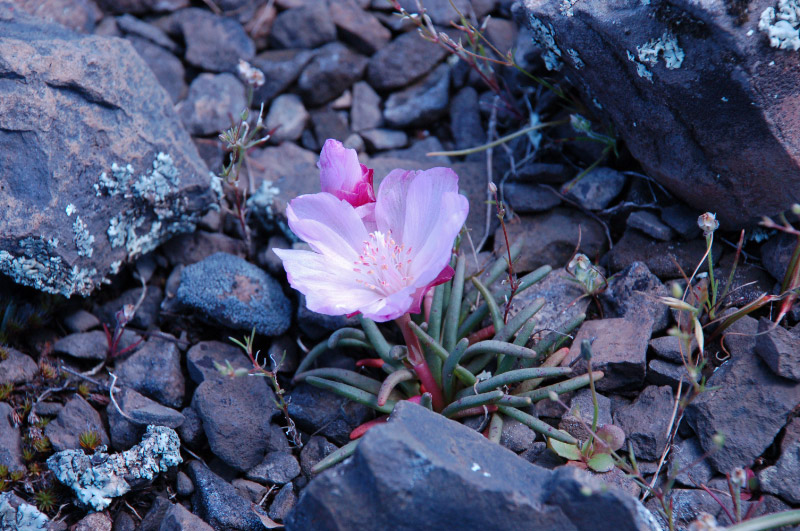
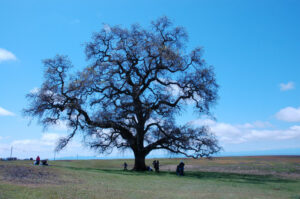
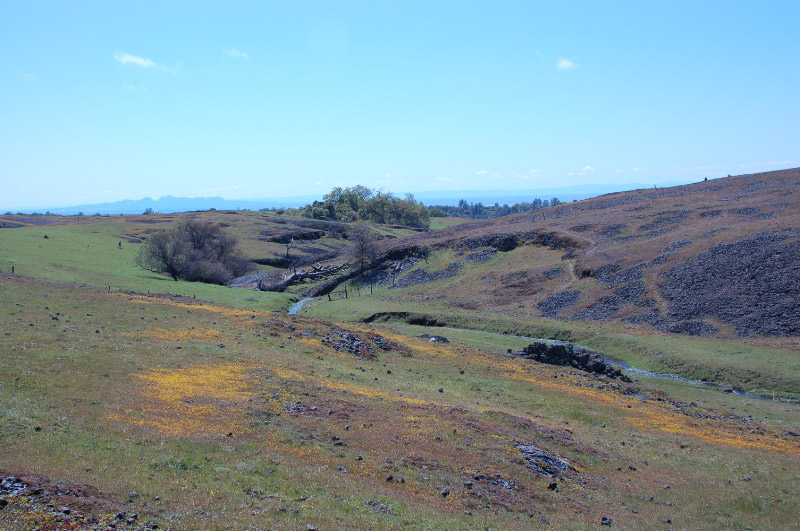
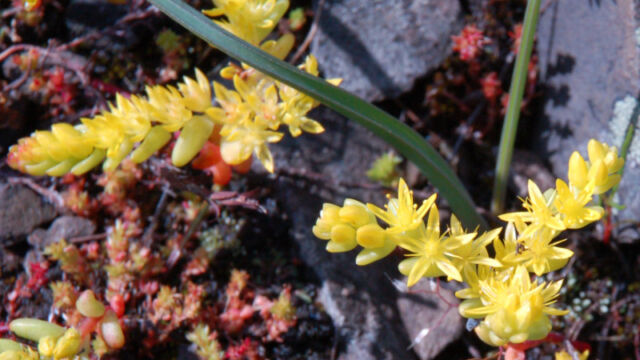
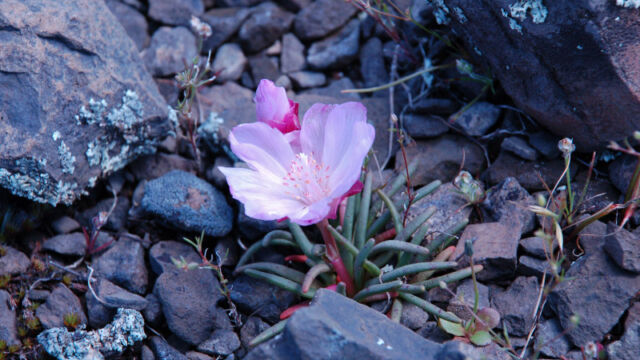
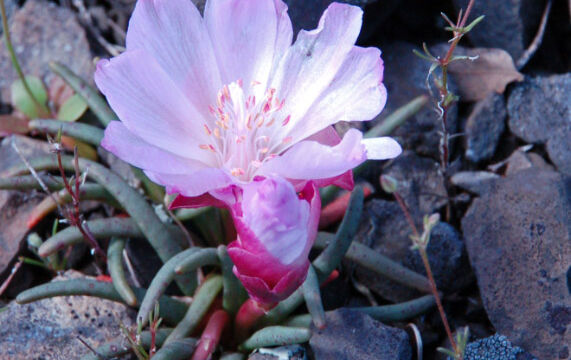
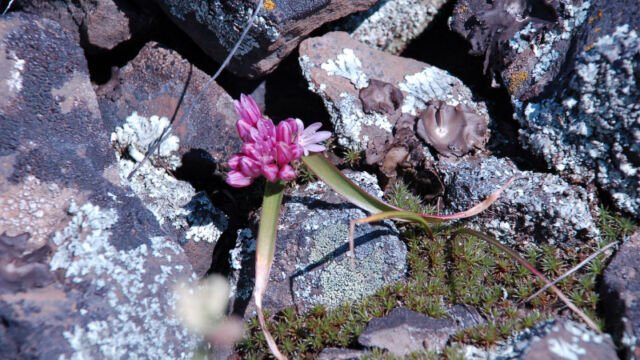

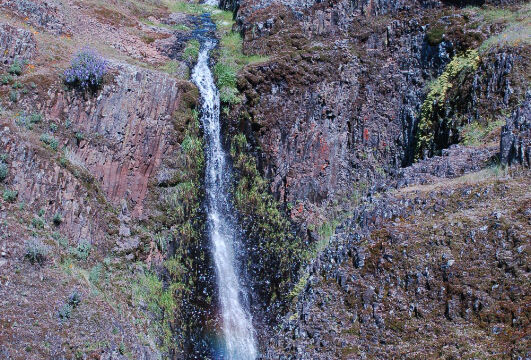
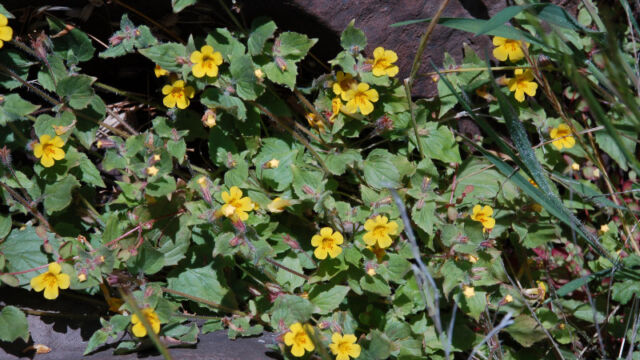
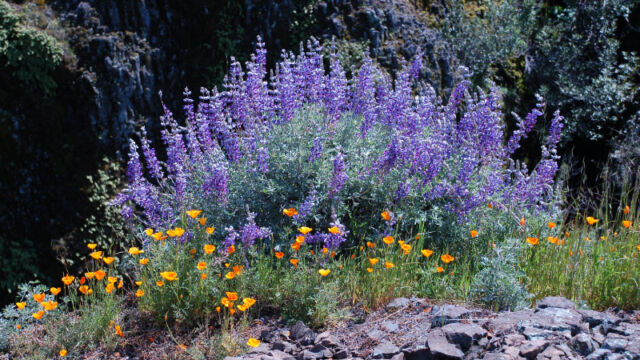

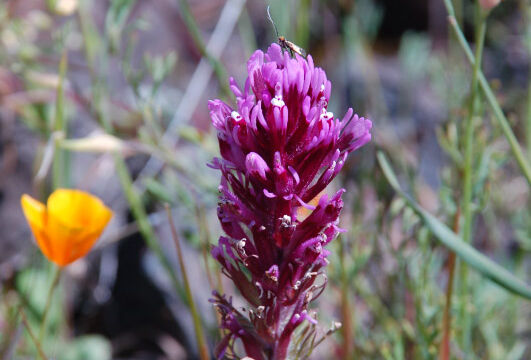
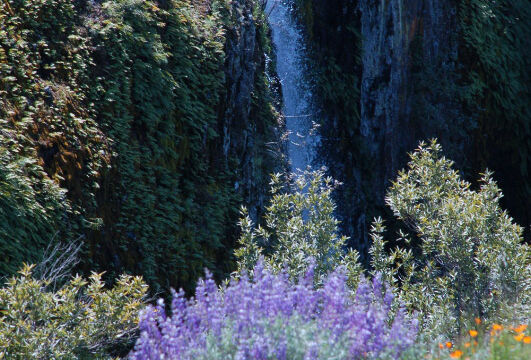
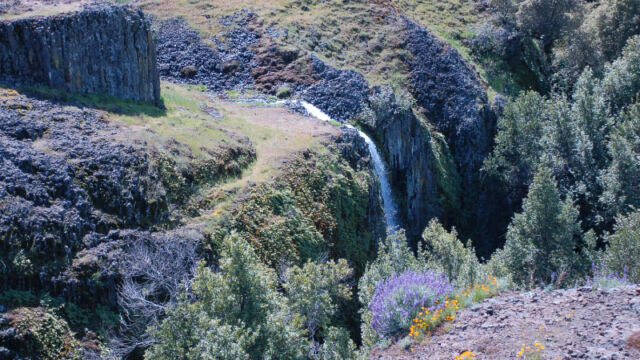
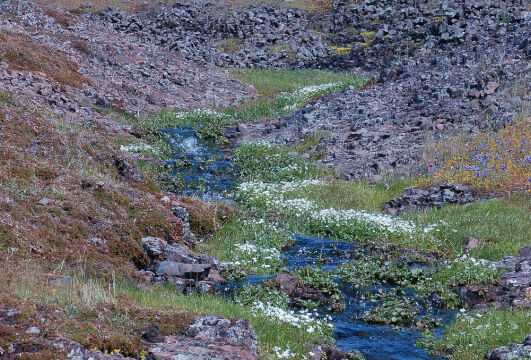
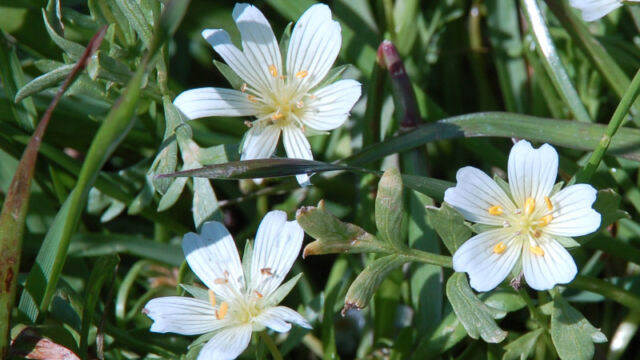
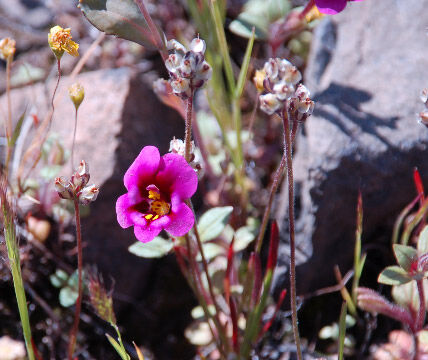
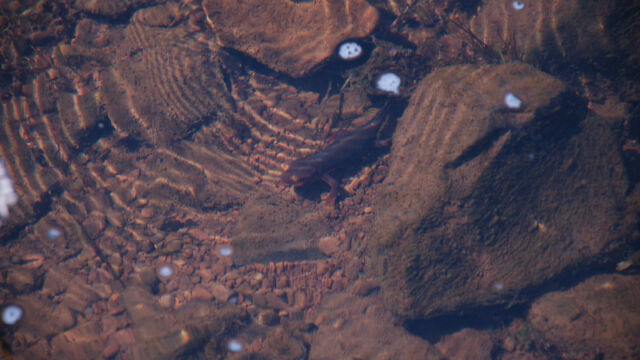
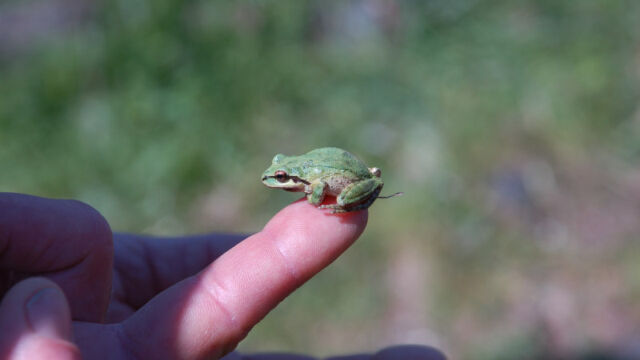
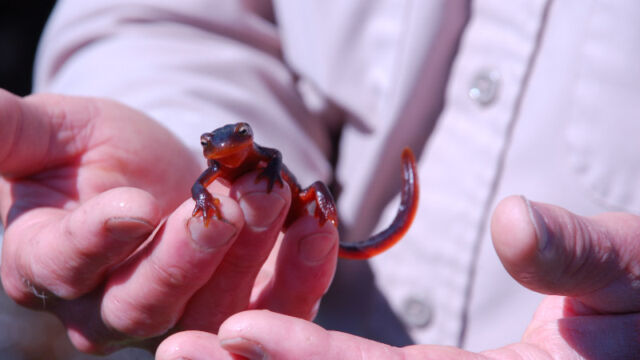
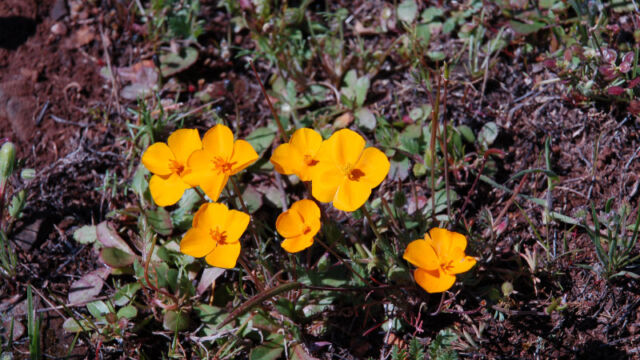
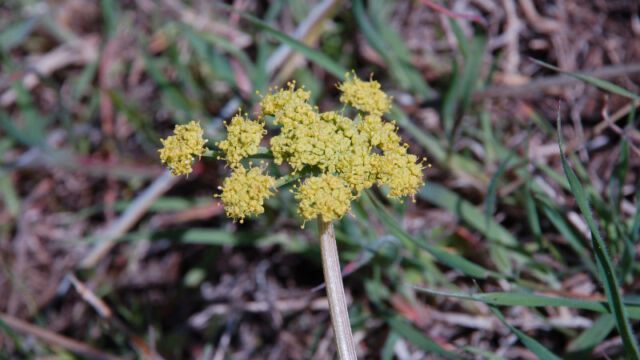
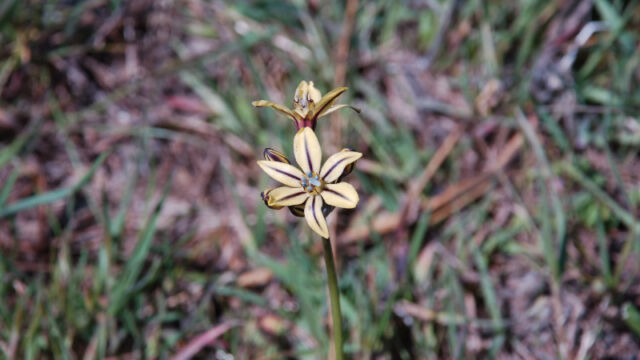

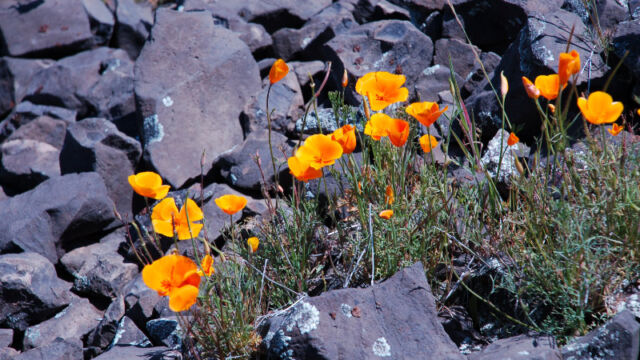
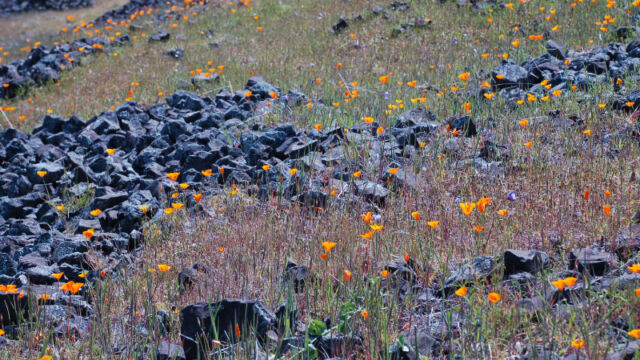
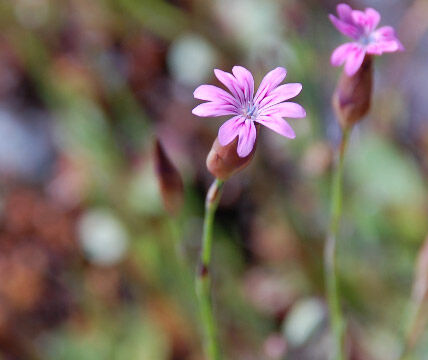
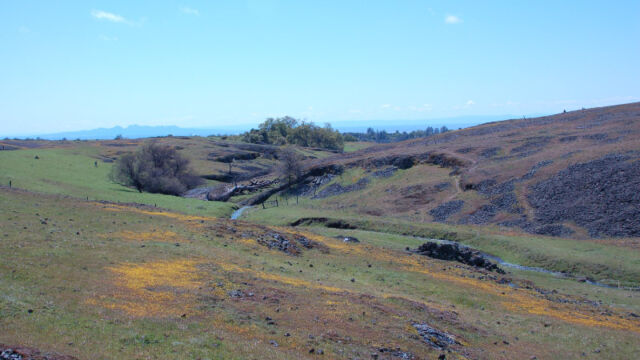
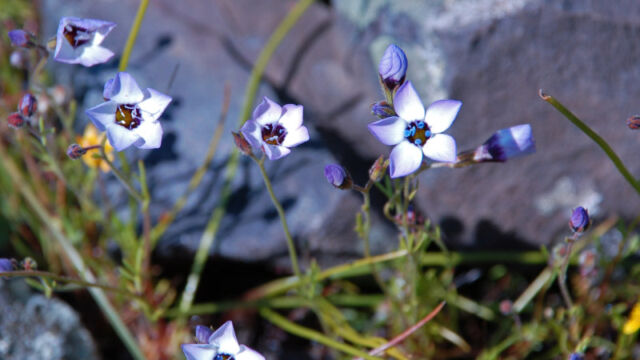

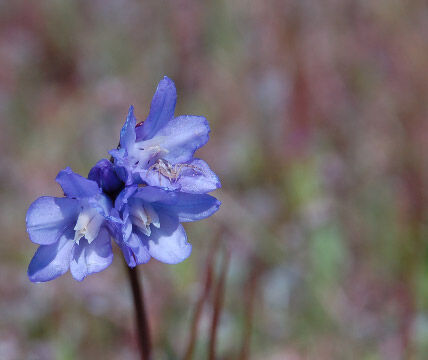
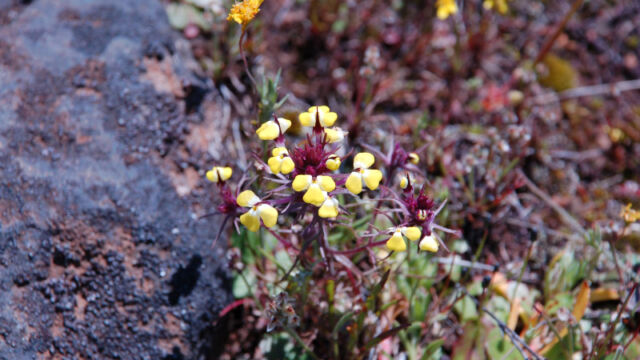

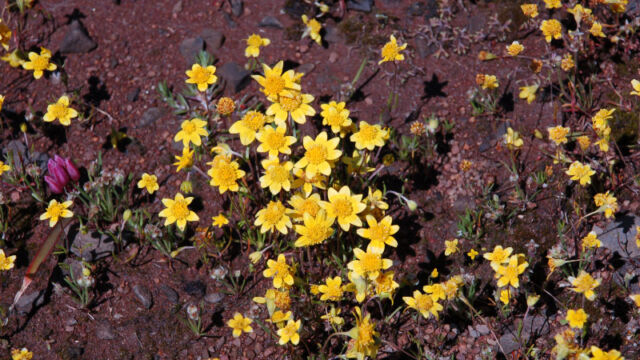
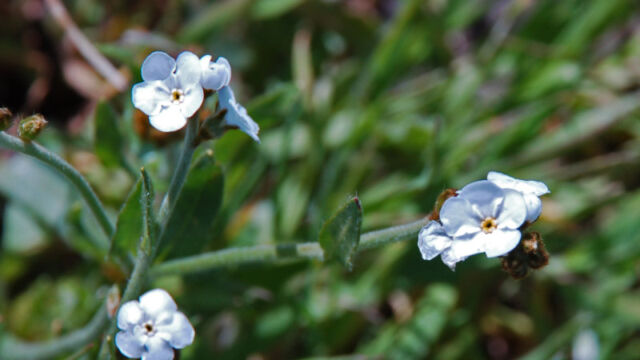
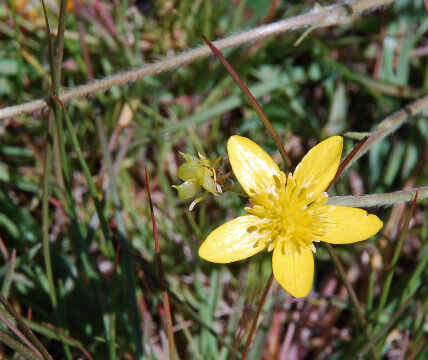
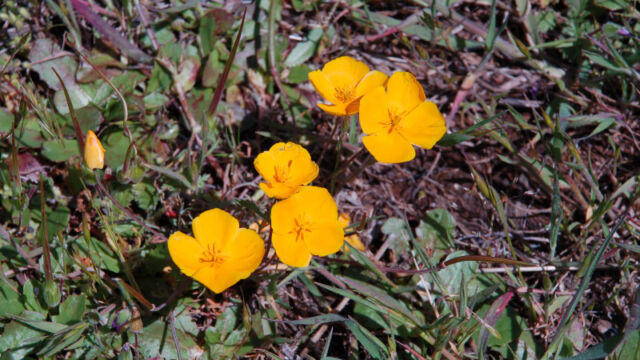
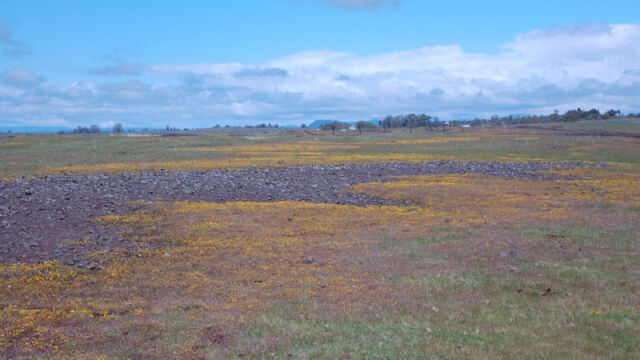
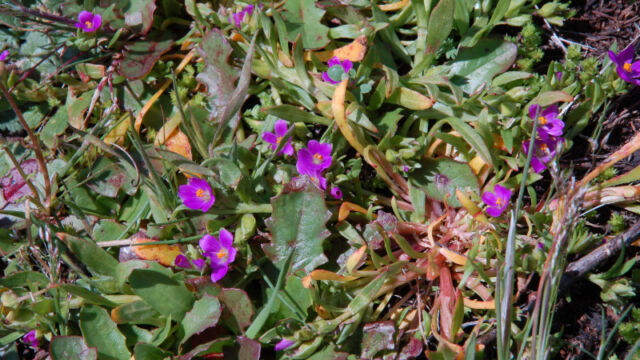
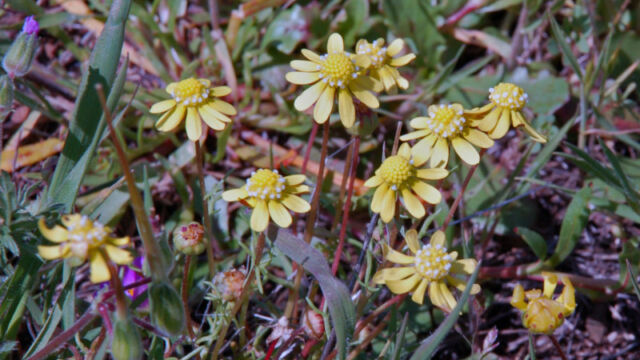
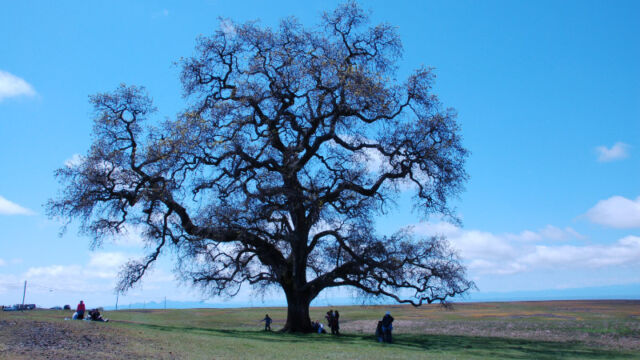
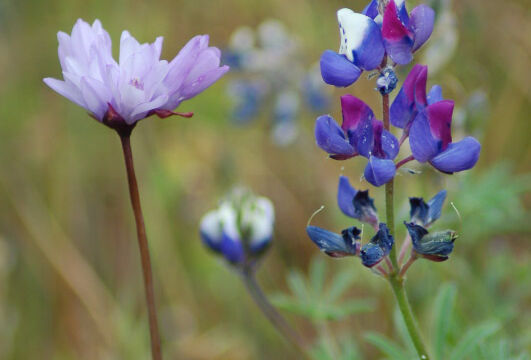
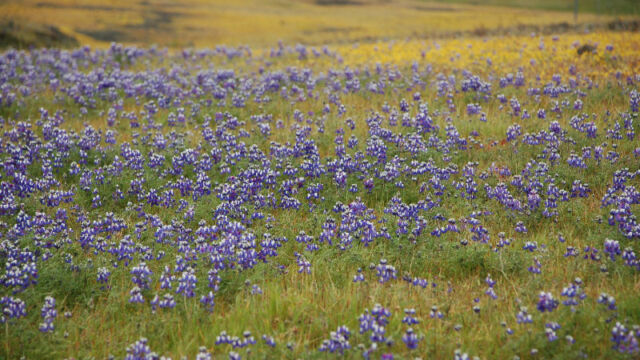
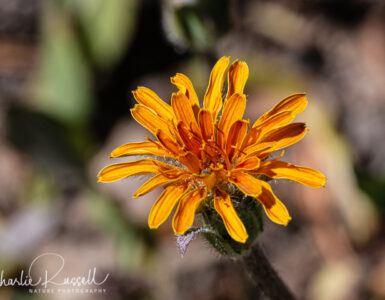
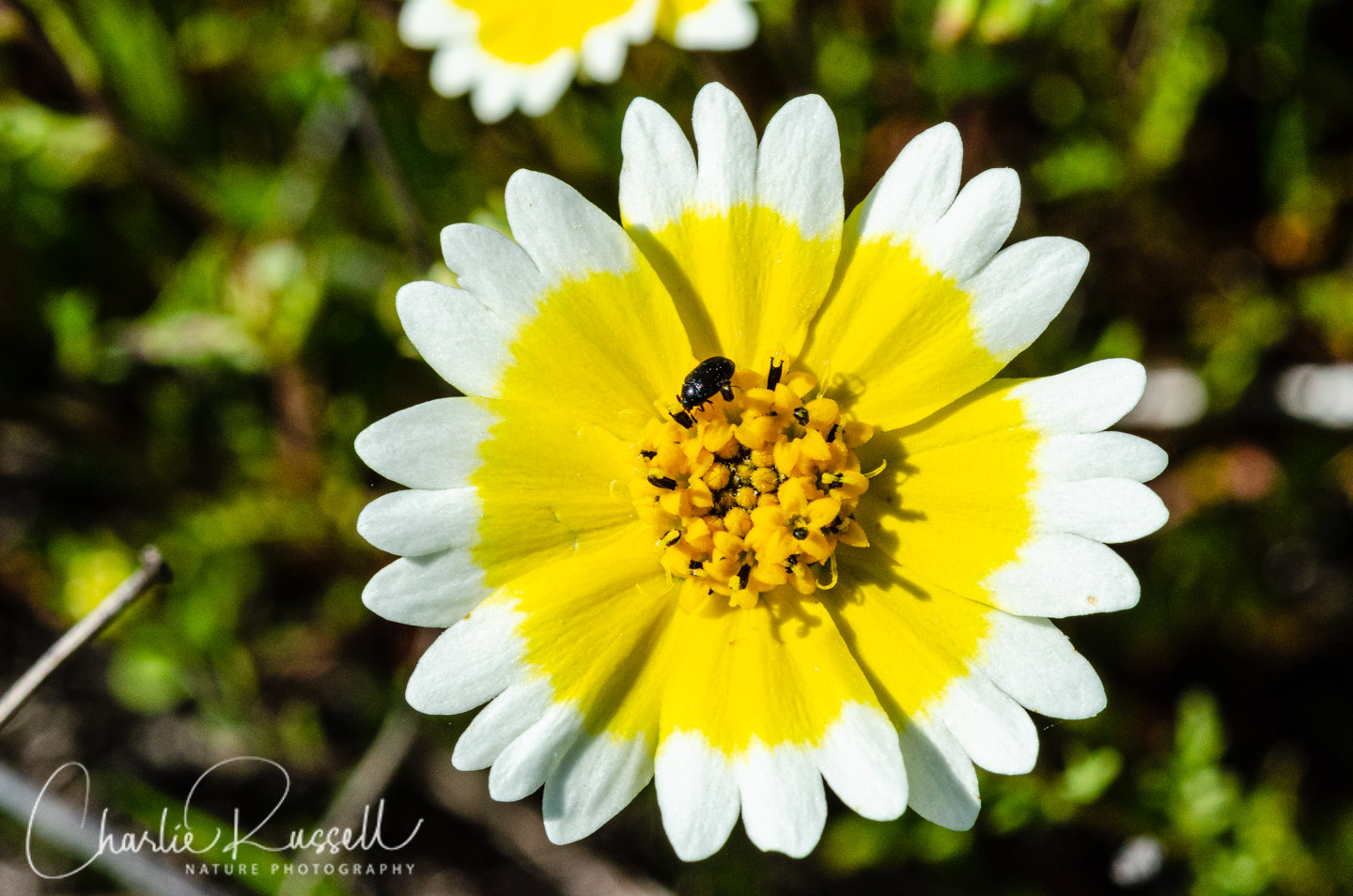
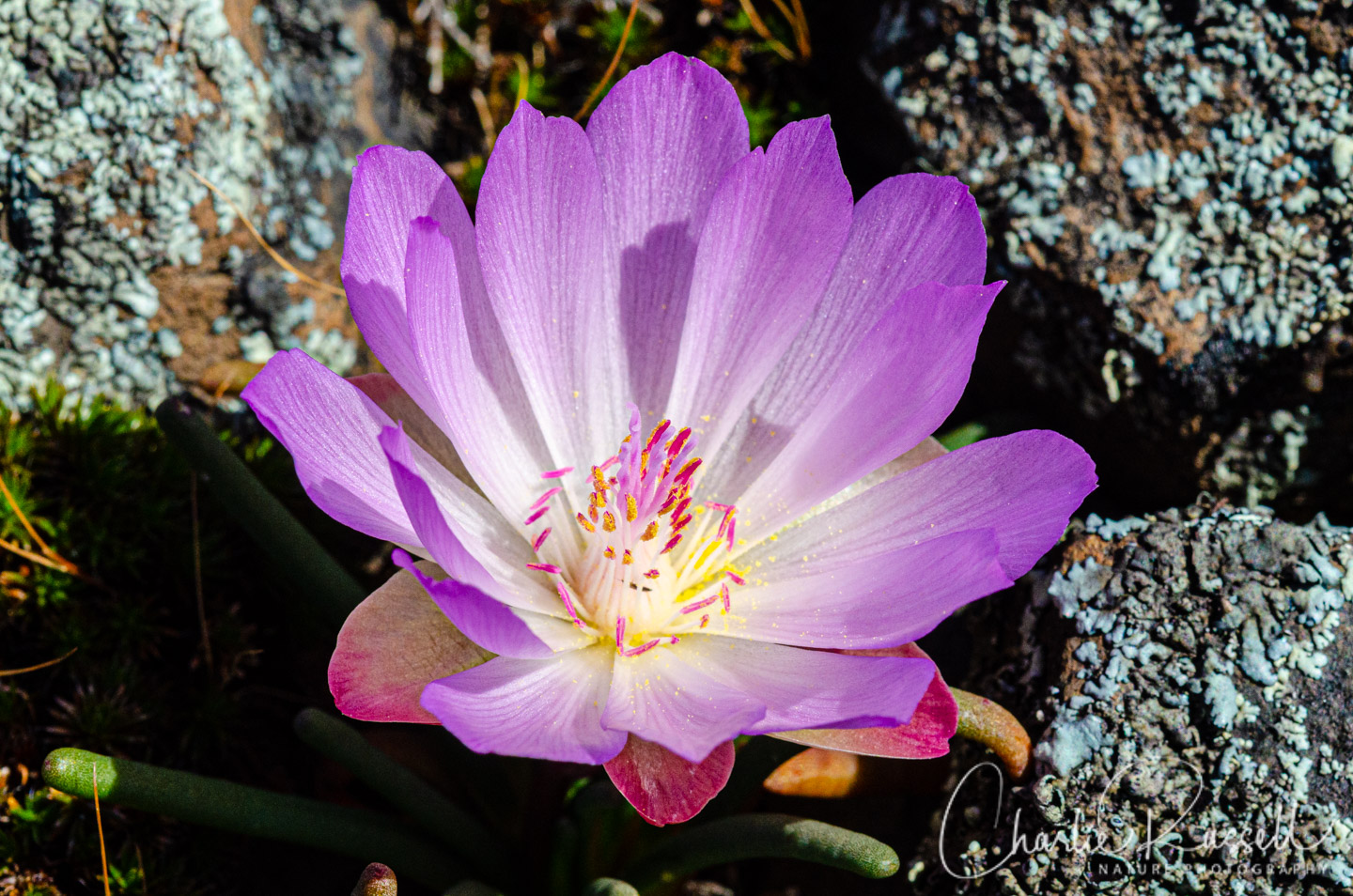
Thank you for this post. Nice photos and insight. I will be in the area tomorrow and hope to get in there for some exercise and a few shots.
Lovely photos and information. Thank you! Please note that a current fishing or hunting license, or Lands Pass @$4 per day and change, is now required for anyone over the age of 16. For more details on the wildflowers, including charts of growing seasons, see the book The Wildflowers of Table Mountain. And for directions to several of the waterfalls, you might want a copy of our book, The Flumes and Trails of Paradise. Happy Trails!
[…] March, April – A common California strategy is to follow spring as it moves upward in elevation. Low elevation wildflower spots like Carrizo Plain NM, Pinnacles NP and Big Sur’s Calla Lily Valley get going in early March. Henry Coe and the Ventana Wilderness will be green, cool, less buggy, and water sources will be running. April is also the best month for skis & snowshoes but that’s another topic. Resources: The wildflower hotline is useful for timing blooms on the central coast. BigSurTrailMap is your guide to the Ventana. Suggested hikes: Boronda Ridge, North Table Mountain […]
Is it possible to visit the vernal pools at North Table Mountain? If so, how do you find them?
Different folks have different opinions about what constitutes a “vernal pool” at North Table Mountain. In my opinion (as someone who studies vernal pools), many of what people call “vernal pools” there aren’t really true vernal pools. However, there ARE true vernal pools, and I visited them on April 11 this year (I haven’t written my article on that trip, yet, and it may take me a few weeks to get that done). By this time, the pools are going to be pretty dry, I think, but we did find a number of special flowers in that area that aren’t found anywhere else in North Table Mountain. And, this year, that area was much prettier than the areas that are more commonly accessed.
Look at the PDF map that I link to from Chico Hiking. You will see a deep canyon, “Beatson”, across the middle. The area south of that, which some of us call the South Plateau, is where you will find the vernal pools. The best ones are just south of Beatson. You can get there from the normal parking lot by following the trails down into Beatson, but then heading southest up the draw where the map says “4WD”, an old road (sort of). Then up to the plateau. It is a long hike and hard to find the write path. Alternately, as you drive up the road from the south, just as you come up the grade to where it is leveling out, there is a gate on the west side of the road. Close to where that map says “BM 1188” and “private”. The gate has a no trespassing sign. There is about 50 to 100 feet of private land from this point until you get to land that is part of the reserve. You can park there, go through the gate, and head up the hill to the southwest, to reach the plateau. Then head west, or slightly northwest. You have to wander a bit to find the vernal pools. And, at this time, they are dry. Hope that helps!